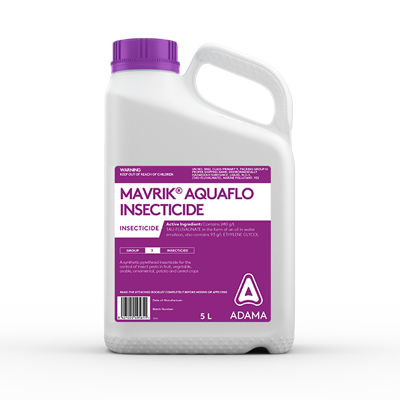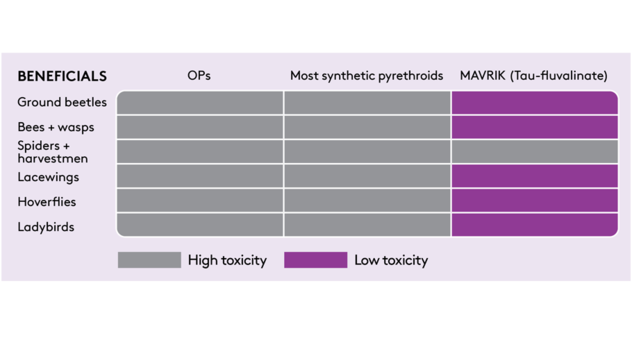MAVRIK® AQUAFLO INSECTICIDE
MAVRIK is your powerful, yet gentle SP insecticide for effective control of insect pests in fruit, vegetable, cereals, ornamental crops, fodder beet and forage...

Taking care of the bad guys.
And the good guys.
There are goodies and baddies lurking everywhere in your fodder beet and forage brassica crops. Fortunately, MAVRIK AQUAFLO can tell the difference. With its unique, low toxicity chemistry MAVRIK AQUAFLO is the only SP insecticide that is safe to most of the key beneficials!
NEW MAVRIK is now approved for Nysius and cutworm control in beet and forage brassicas!
MAVRIK AQUAFLO offers powerful control of Nysius and cutworm in your fodder beet crop. This unique SP insecticide is IPM friendly and crop-safe, yet highly effective against pests. MAVRIK AQUAFLO is far more user-friendly than existing OPs, but no less effective. Combined with our other fodder beet specific products, like GOLTIX® GOLD, GOLTIX, TOREROTM, ETHOSAT® and RIFLE®, it will help maximise the return from your crop.
General Info
The bad guys
Nysius
Unchecked, Nysius feeding damage to the base of the plants can destroy a high percentage of the crop, massively impacting farmers relying on their high-value beet crop.
Nysius are found where vegetation is sparse and sunlight falls directly on the ground, making seedlings especially susceptible. They thrive under hot, dry conditions. Adult Nysius hide under clods or debris on the ground when the temperature begins to fall in the evening and become active in the morning when the temperature rises.
Cutworm
After hatching, young cutworm caterpillars forage on leaves until they are about one third grown. Larger cutworm caterpillars lie curled up 25-50 mm below the soil surface during the day and emerge at night to feed. Larger cutworm caterpillars are also the most damaging, cutting seedlings off at their base.
Potent control and gentle on beneficials
Beneficials can be exposed to pesticides in a number of ways. These include; direct contact with spray droplets during application, contact with spray residue on the plant or soil after application, and by the consumption of pesticide-contaminated prey.
Beneficials such as hoverflies and lacewings have a vital role in protecting beet and other nearby crops. Hoverfly larvae feed on aphids of all kinds while the adult is an important pollinator. Lacewings are broad spectrum predators, effective against pests including aphids and other soft bodied insects such as small caterpillars.
MAVRIK has been getting it right where others have failed, effectively combatting Nysius and cutworm while avoiding harm to beneficial insects and users.
Low toxicity thanks to unique chemistry
MAVRIK (tau-fluvalinate) is a synthetic pyrethroid (SP) insecticide that is truly unique. Its chemistry differs significantly from other SPs in the market. MAVRIK not only controls Nysius and cutworm, but also has low toxicity to beneficials such as pollinators, parasitoids, predators and fungal feeders. Spiders and harvestmen are the notable exceptions.
MAVRIK is also the leading bee-safe SP insecticide. When applied during non-foraging periods, applications will not interfere with the activity of honey-bees once spray has dried.
Graph below shows impact of different insecticides on beneficials
